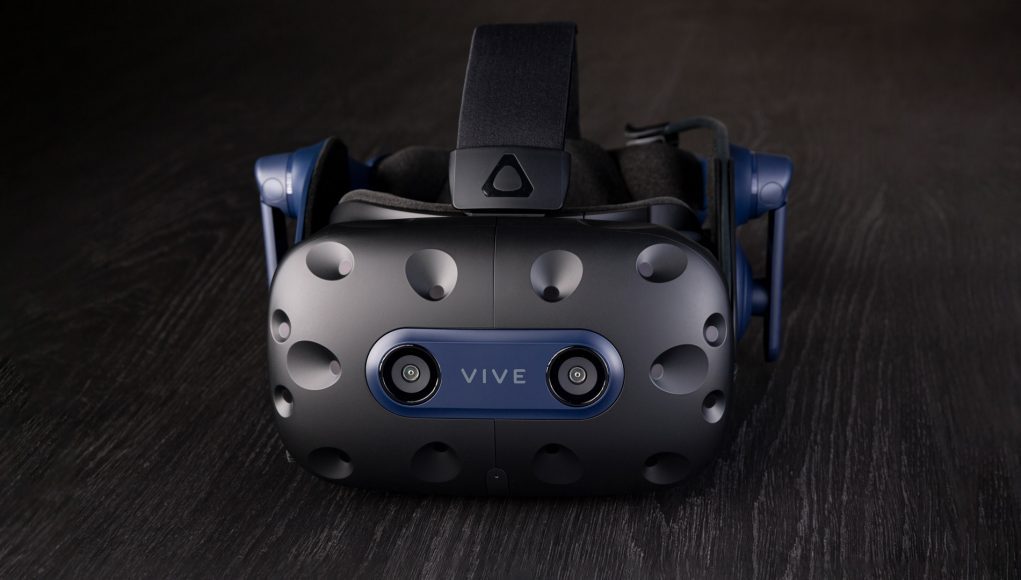Where is Edtech Heading With the Rise of the Metaverse? A Quick Guide
Image source Education technology (Edtech) is constantly evolving alongside the wider world of technology. As tech advances are made in leisure areas such as gaming or social media, education sooner or later feels the benefits. No area of technology development has been spoken about as much as the Metaverse. Read on to find out how […] The post Where is Edtech Heading With the Rise of the Metaverse? A Quick Guide appeared first on Emerging Education Technologies.


Education technology (Edtech) is constantly evolving alongside the wider world of technology. As tech advances are made in leisure areas such as gaming or social media, education sooner or later feels the benefits.
No area of technology development has been spoken about as much as the Metaverse. Read on to find out how the rise of the Metaverse may well impact education technology.
What actually is the Metaverse?
It’s going to be impossible to talk about the Metaverse without first giving a semi-brief explanation of what it actually is. For some people, it’s a teenager with a clunky VR headset on, for others, it’s Keanu Reeves deciding which color pill to take and others might say it’s the Sims mixed with Fortnite.
All of these are kind of correct.
The problem is, the Metaverse is more of a concept at this point in time and a lot of the attempted explanations are assumptions. In order to keep this as a ‘quick guide’, I’ll define the Metaverse in the simplest way possible.
The Metaverse is a virtual environment where people are represented by characters, known as avatars, who interact in settings that may not be possible in real life.
A few examples of Metaverses
- Fortnite – The massively popular Battle Royale themed video game. It goes beyond simply a video game as players can interact in-depth, use a virtual currency and attend virtual events.
- Roblox – Another Metaverse video game, Roblox is a platform where users create games for other users to enjoy. Like Fortnite, Roblox has a detailed avatar customization aspect as well as a huge virtual currency linked to real-life money.
- Habbo Hotel – A Metaverse social simulation game that peaked in the mid-2000s. Habbo users created avatars, could purchase virtual real-estate and interact in various life-like settings.
- Decentraland – Similar to Habbo Hotel, Decentraland revolves around users purchasing virtual plots of land to be developed however they like. Users again create avatars and interact with one another in settings that mirror real life, with the limitations of geography removed.

Common Metaverse traits
Across each of the four Metaverse examples given above, certain traits permeate each of them. Each simulates reality to some degree, usually through an emphasis on socializing and avatar creation, but also provide an opportunity to do things that are impossible in real life. Owning huge property and high profile items, traveling instantly across the ‘world’, or bending the laws of physics.
All Metaverses have virtual currencies that can be purchased through real-life money or earned more slowly by playing/logging in. Decentraland has even been used as an investment by many who see the price of virtual real estate as a great potential ROI.
So Metaverses are virtual spaces that simulate the real world. These spaces allow users to exist in a way they perhaps can’t in person due to geography, finances or physics. Typically these platforms are global and utilize automatic localization, although each Metaverse has its own local strategy definition.
So how is Education Technology likely to be affected by the ever-growing Metaverse?
Ways Edtech will change to Incorporate Metaverse Platforms
The removal of limiting factors
As mentioned above, one of the key features of all Metaverse environments is how they remove so many of the barriers faced in the real world. The biggest limiting factor most teachers face when constructing lesson plans is the lack of resources beyond textbooks and an overhead projector.
Teaching in a Metaverse platform means textbooks are replaced by integrated videos, gaming style challenges that require students to apply learned skills to compete, as well as a rich world that engages them in a way a drab gray classroom simply can’t.
Using the above examples of Metaverse, one of the most obvious benefits would be how students wouldn’t be limited by their geography. A student from Boston, MA could learn with and from a student in Warsaw, Poland. Their classmates could be worldwide instead of simply the other kids in the catchment area for their school.
Augmented reality is already being used in classrooms across the US, often offering students a chance to get ‘hands on’ with equipment too expensive or dangerous in the real world. A prime example of this is Anatomy 4D, in which students can scan pages in a textbook and then interact with a virtual human body. How else could high school aged children get so close and in-person with a cadaver?

Meeting students where they already are
As of April 2021, Roblox has 202 million monthly users, 67% (135 million) of those are 16 and under. 135 million children already spend hours every day in a Metaverse where they build games and challenges for one another to solve. In these two sentences it should already be obvious why education would benefit from moving into the Metaverse.
The difference between brightly colored, intricate peer created challenges and book/listening based classroom learning must be a stark one for young learners. Transitioning more learning into a space where children already feel comfortable can only be good for developing their emotional intelligence as well as their academic development.
Physical interaction is something the whole world missed out on through 2020 and 2021 and while not a replacement for a school playground, the Metaverse is a hive of socializing going well beyond the virtual water cooler remote workers have gotten used to over the last few years.

Less wasted resources
Traditional learning resources can’t be updated and begin to age from the moment they are published. This means that school inventories are perpetually being filled with the education equivalent of deadstock. What does deadstock mean? Stock that can’t be sold due to irrelevance or expiry. Think a 60s technology textbook, deadstock.
Resources crafted virtually, to be used in Metaverse platforms, don’t suffer from deadstock issues. Once created, they can be edited, updated and modernized as new findings are made. When physical resources aren’t needed anymore they go to a landfill, virtual resources are simply deleted.
A great deal of a teacher's time is spent marking test papers and students' bookwork. With a move to more virtual learning, teachers would be able to rely more on software to grade tests. Covid 19 already forced educators to rethink the current high-stakes testing models by highlighting the stress they place on children as well as teachers.
Less time spent marking means more time engaging with students during school hours and less out of school hours worked, which helps mitigate overworking, a problem 55% of teachers reportedly struggle with.
When communicating with students, teachers will be able to make use of data analyzing software, similar to call center predictive analytics, to monitor progression and quickly offer tutoring where needed.
When teaching in virtual channels, such as a Metaverse, schools will need to invest in secure communications platforms for teachers and students to connect and share data on. As schools invest in virtual integration, they will have to choose between single tenant vs multi tenant architecture.
There are pros and cons to both single and multi tenant, however multi tenant tends to be cost effective thanks to the large number of students that would use it. Multi tenant infrastructure has a tendency to be more cost effective, which when used by thousands of people (average sized high schools) is a more resource efficient option.
An insistence on internet safety for young people
Child safety is perhaps the single biggest concern when it comes to children and virtual learning, or virtual anything for that matter! Children's safety has to be considered before anything else when it comes to education in the Metaverse.
If edtech is to involve Metaverse, secure and closed environments will have to be given center stage in the platform's priorities. At present even child oriented Metaverse such as Roblox and Fortnite have had (and continue to have) their issues and until these issues are made impossible, education can’t transition into the virtual environment.
A likely solution for education to utilize Metaverse as a teaching platform would be a dedicated education only virtual world where schools occupy virtual space, as in Decentraland, and only those with verified school board accounts can access its virtual school grounds.

Is Metaverse The Future of Edtech?
Probably, to an extent.
Children are already existing in Metaverse realities today, they are part of huge networks of interconnected children on social media platforms such as Snapchat and TikTok, they already have virtual only friends on Roblox and Fortnite and they might only connect with distant family members on Instagram or Facebook messenger.
School is likely the only space left where a virtual presence doesn’t reign supreme.
Education can no doubt benefit from at least partial incorporation of Metaverse platforms. The removal of physical barriers, geographic barriers and instead focusing on immersive learning can only benefit young learners. However, Metaverse platforms as we know them today need to adapt before they become part of edtech.
Spaces need to be made as safe as physical schools and teachers need to become comfortable in virtual teaching spaces. In all likelihood, much like now, schools will purchase virtual learning resources as opposed to making them in house.
The transition to learning in the Metaverse won’t be an easy one, but with the benefits it could bring to the education industry, it’s one that's well worth making.
The post Where is Edtech Heading With the Rise of the Metaverse? A Quick Guide appeared first on Emerging Education Technologies.





































